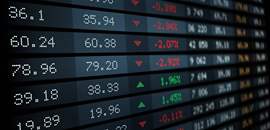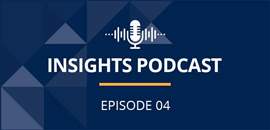Throughout the post-war era, there have been a series of external shocks that have impacted the global economy and markets that are covered in my book Global Shocks.1 The main development since then is the COVID-19 pandemic, and people have asked how I view it.
The short answer is the current situation is unique. For the first time in the post-war era, the global economy has been buffeted by two shocks—the worst public health disaster in one hundred years combined with Russia’s invasion of Ukraine. Together, they have weakened the global economy and boosted inflation worldwide to the highest rate in four decades. This makes for a very challenging environment for policymakers.
Reining in Inflation
Last week, the Federal Reserve boosted the fed funds rate by 75 basis points for a second consecutive time to signal its determination to bring inflation back to its 2% target. Release of GDP data subsequently showed a second consecutive quarter of negative growth, which has been dubbed a “technical recession” as the jobs markets is still robust. A softening in the labor market, however, could portend the onset of a recession later this year or next.
Meanwhile, the European Central Bank raised interest rates by 50 basis points at its July policy meeting to tackle Eurozone inflation that has spiked to 8.9%. This move represents the first tightening since 2011. It occurred even though consumer confidence has fallen to a record low, and the EU economy is vulnerable to cutbacks in natural gas supplies from Russia.
The IMF is concerned about prospects for the global economy, calling it a “gloomy and more uncertain outlook.” Its updated forecast (see table below) sees global growth slowing from 6.1 percent last year to 3.2 percent this year and 2.9 percent next year, which represent downgrades of 0.4 and 0.7 percentage points, respectively, from April.
| (real GDP, Annual Percent Change) | 2021 | 2022 | 2023 |
|---|---|---|---|
| Global Growth | 6.1% | 3.2% | 2.9% |
| Advanced Economies | 5.2% | 2.5% | 1.4% |
| U.S. | 5.7% | 2.3% | 1.0% |
| E.U. | 5.4% | 2.6% | 1.2% |
| Emerging Markets | 6.8% | 3.6% | 3.9% |
| China | 8.1% | 3.3% | 4.6% |
Source: IMF Blog.
The main risk the IMF sees is a sudden stop of Russian natural gas exports to Europe. In that case, inflation would rise and global growth would decelerate to 2.6 percent this year and 2.0 next year—a pace that has been breached just five times since 1970.
While financial markets rallied this past month amid declines in the price of oil, it may not last if there are ongoing supply disruptions. Last week, for example, Russia’s state-owned gas company Gazprom announced it would cut flows of natural gas to Germany in half, to 20% of capacity. This threat was previously flagged by Daniel Yergin, an acclaimed energy expert, in a commentary where he stated that today’s energy crisis will probably become worse than the 1970s oil shock.
Labor Market, Supply Chain Challenges Linger
My own assessment is that there are some parallels to the 1970s, but there are also important differences. The key differences are inflation expectations are much lower now and the dollar is strong, which suggest investors have not lost confidence in the Fed.
However, several developments have surprised policymakers and investors alike. One surprise is the way the COVID pandemic has transformed the U.S. labor market. Although the unemployment rate declined steadily from mid-2020, the labor force participation rate also declined as millions of people were unable to return to their former jobs or reluctant to do so. This contributed to a tightening in the labor market and upward pressures on wages, while the Fed shifted to a stance of seeking “maximum employment.”
Another surprise is the global supply-chain shortages that surfaced in 2021. The Fed sought to reassure investors the uptick in inflation would be transient, and investors concurred because inflation had been low since the 1990s, and policies implemented after the 2008 Global Financial Crisis did not rekindle it. However, shortages have persisted with no end in sight owing to the protracted Russia-Ukraine conflict and China’s zero-tolerance COVID policy.
Recession Risks
While many people worry that the Fed will over-react and trigger a recession, bond investors believe the Fed will ultimately prevail in combatting inflation. Thus, the spread between Treasury yields and TIPS (Treasury inflation-Protected Securities) has narrowed indicating inflation expectations have eased recently. The bond market, in turn, is pricing in an easing in monetary policy next year.
One risk nonetheless is that core inflation could stay elevated even if headline inflation recedes. The reason: The cost of shelter, which accounts for one third of the core CPI index, is poised to rise further due to the steep rise in mortgage rates this year and home price appreciation of 30 per cent over the past two years. Therefore, the Fed could be compelled to raise the funds rate beyond what is currently priced into markets.
What Can Investors Do Amid Heightened Uncertainty?
But there are also global risks to consider. These include a prolonged conflict between Russia and Ukraine that could cause prices of food and energy to escalate, and China’s zero-tolerance policy that could extend supply-chain disruptions and weaken its economy. Weighing these considerations, the most likely outcome is a return to a world of stagflation—albeit less severe and protracted than in the 1970s.
A version of this article was posted to Forbes.com on August 3, 2022.
1Nicholas P. Sargen, Global Shocks: An Investment Guide for Turbulent Markets, Palgrave Macmillan, 2016.
Past performance is not indicative of future results. This publication contains the current opinions of Fort Washington Investment Advisors, Inc. Such opinions are subject to change without notice. This publication has been distributed for informational purposes only and should not be considered as investment advice or a recommendation of any particular security, strategy, or investment product. Information and statistics contained herein have been obtained from sources believed to be reliable and are accurate to the best of our knowledge. No part of this publication may be reproduced in any form, or referred to in any other publication, without express written permission of Fort Washington Investment Advisors, Inc.





















